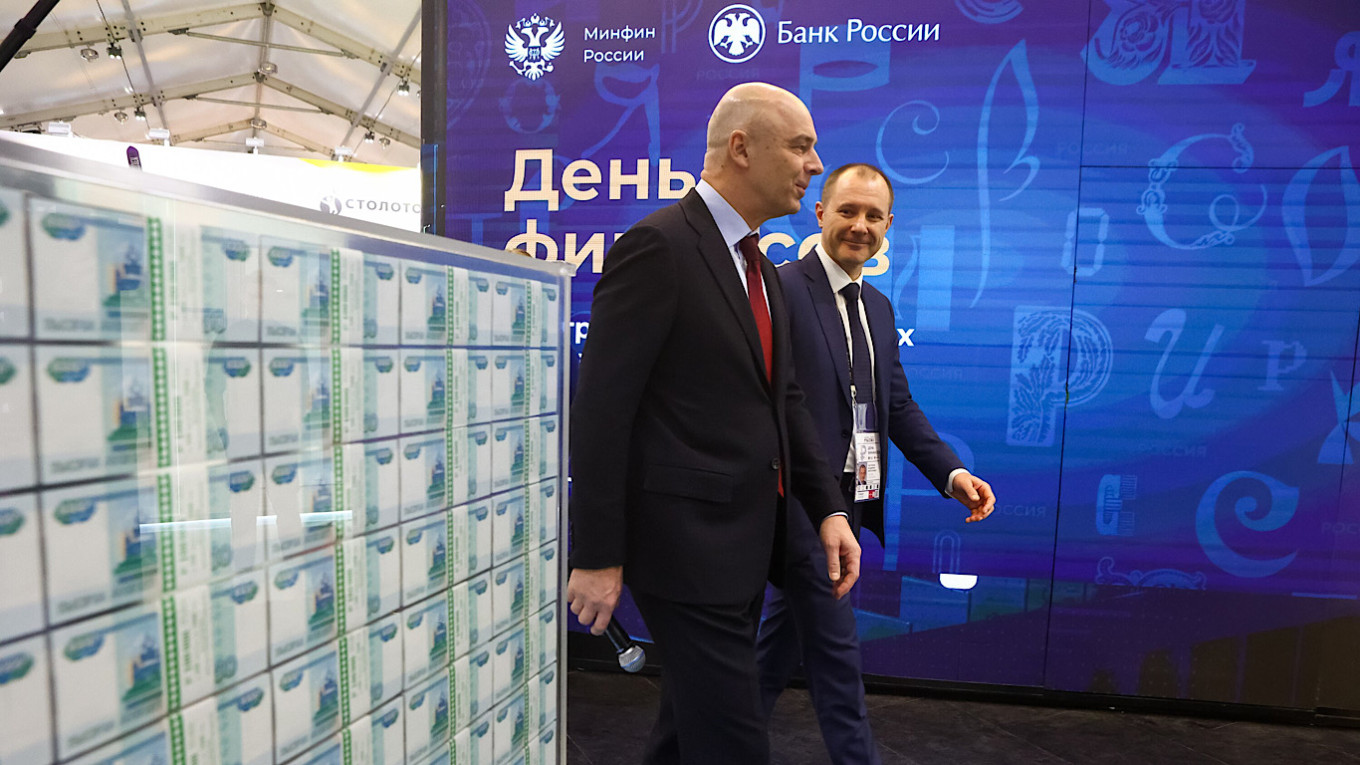The Russian Ministry of Finance has released a proposed federal budget for 2026 that includes plans for new tax increases aimed at maintaining consistent wartime expenditures.
This budget proposal, which still awaits approval from the State Duma, reflects the Kremlin’s commitment to continue its military operations in Ukraine, even if it results in heightened expenses for both businesses and consumers.
A significant adjustment involves increasing the value-added tax (VAT) from 20% to 22% to help bridge a growing deficit resulting from increased defense spending and declining revenues from oil and gas due to Western sanctions.
Additionally, more businesses will need to remit VAT payments, as the threshold for annual revenue is expected to drop from 60 million rubles (approximately $732,000) to 10 million rubles ($122,000).
The government also has plans to impose a 5% tax on gambling wagers and a 25% tax on profits generated by betting companies.
Dmitry Polevoy, an economist at Astra Asset Management in Moscow, anticipates that the new tax measures, alongside the reduction of existing tax exemptions, could generate between 2.4 and 2.9 trillion rubles ($29.3 to $35.4 billion) in additional revenue.
For perspective, the budget deficit for Russia is forecasted to reach 5.736 trillion rubles ($70 billion) in 2025 and 3.786 trillion rubles ($46.2 billion) in 2026.
According to Polevoy, the implementation of these tax measures should enable the Ministry of Finance to maintain planned expenditures for 2026 without reducing them in nominal terms.
The government aims to collect approximately 40.3 trillion rubles ($491.7 billion) in revenues in 2026, marking an increase of nearly 10% over the previous year.
In contrast, federal expenditures are projected to grow by a smaller margin of 4.3%, rising from 42.3 trillion rubles ($515.1 billion) this year to 44.1 trillion rubles ($538 billion) the following year.
This indicates that the Kremlin is adopting a careful and deliberate approach to budgeting, neither drastically cutting spending nor allowing it to exceed certain thresholds.
When assessed as a percentage of GDP, revenue is expected to stay constant at 17.1%, while expenditures are predicted to diminish from 19.7% to 18.7%, according to calculations from the business daily Kommersant.
Despite overall expenditure stability, budget allocations suggest that the Kremlin’s focus remains on foreign affairs and defense.
In 2026, defense and domestic security spending is projected to account for around 38% of the budget, slightly lower than the 40% share observed in the past two years.
Occupied regions in Ukraine will receive a substantial increase in funding, with plans for an additional 60 billion rubles ($732 million) in subsidies for 2026 compared to the 2025 budget, as reported by the exiled outlet Vyorstka.
The Russian-held areas of the Donetsk region are set to receive the largest funding increase, boosting their allocation from 54.5 billion rubles ($664.9 million) in 2025 to 77.8 billion rubles ($949.2 million) in 2026, while Luhansk region subsidies will rise from 37.8 billion rubles ($461.2 million) to 55.5 billion rubles ($676.1 million).
Funding for media and propaganda efforts is also on the rise. The government plans to spend 146 billion rubles ($1.78 billion) on mass media, a 6.6% increase from the previous year.
Of this budget, about 25.96 billion rubles ($317 million) will go to the Internet Development Institute, a key tool for Kremlin-driven youth propaganda, according to investigative outlet IStories.
Other influence initiatives are also expanding. The “Russia in the World” program, which aims to promote “traditional spiritual and moral values” among youth internationally, will receive 11.9 billion rubles ($145.2 million) in 2026, more than doubling its 5.5 billion rubles ($67.1 million) allocation from 2025, as per Agenstvo.
Conversely, traditional propaganda outlets such as RT and the state television holding VGTRK are projected to face cuts of about one-third in their funding starting from 2027, according to IStories.
While the defense and propaganda budgets remain intact, several development programs will experience budget reductions.
Some of the cuts will affect rural development programs (decreasing by 30% to 81.5 billion rubles, or $993 million), the aviation sector (down by 29.6% to 14.4 billion rubles, or $175.7 million), and the energy industry (dropping by 28.6% to 17.9 billion rubles, or $218.4 million).
Funding for a program aimed at modernizing regional primary healthcare is set to plummet from 123.3 billion rubles ($1.50 billion) in 2025 to just 53.2 billion rubles ($649 million) in 2026.
Three primary factors are driving Russia to increase taxes and moderate overall spending.
Firstly, revenue projections for the 2025 budget fell short, exacerbating the deficit. Oil and gas revenues are expected to be only 8.65 trillion rubles ($105.5 billion) this year, which is a 22% decline from the 11.13 trillion rubles ($135.8 billion) gathered in 2024. A sluggish economy, projected to grow by a mere 1%, has also negatively impacted non-energy tax collections.
Consequently, the 2025 deficit is anticipated to reach 2.6% of GDP, the highest level since 2020 during the pandemic. Under the new budget, the government aims to reduce the deficit to 1.6% of GDP in 2026.
Secondly, the ongoing war in Ukraine shows no signs of conclusion, and sanctions are likely to become more stringent.
This situation places Moscow in a difficult position; it cannot afford to decrease defense spending, yet it also seeks to avoid chronic deficits or financial strain that would undermine its ability to respond to potential future crises.
Russia is striving to stabilize its fiscal situation and rebuild its financial reserves, or at least halt their further depletion.
After years of significant withdrawals, the liquid assets of the National Wealth Fund—held in foreign currency and gold—have declined by approximately half since the invasion of Ukraine, leaving 3.92 trillion rubles ($47.8 billion).
The government intends to finance next year’s expenditures through incurring new debt and raising taxes while rebuilding the fund’s liquid reserves to 4.5 trillion rubles ($54.9 billion) by the end of 2026.
Finally, inflation remains persistently high, mainly due to the government’s ongoing war-related expenditures and state subsidies.
By striving for a more balanced budget, the Finance Ministry hopes to alleviate inflationary pressures and eventually facilitate a reduction in the Central Bank’s key interest rate, which currently stands at 17%.
The new tax structure is expected to impact small businesses the most.
Lowering the VAT threshold from 60 million to 10 million rubles in annual revenue could affect around 450,000 small businesses and self-employed individuals, as reported by business outlet The Bell.
Yegor Diashov, head of the investment firm Dialot in Moscow, predicts that the increased tax burden will speed up market consolidation, leading to smaller firms merging or being acquired by larger ones.
“A company generating 10, 20, or even 50 million rubles annually will become increasingly difficult to manage,” he stated. “Businesses will either partner up, sell to one another, or larger entities will absorb weaker players.”
However, analysts suggest that the tax hikes are unlikely to cause significant inflationary or economic upheavals.
Polevoy estimates that the VAT increase will contribute only 0.6 to 0.7 percentage points to inflation in 2026, as increased costs for goods and services are passed on to consumers, and essential items such as food and medicine remain subject to a lower VAT rate of 10% and are exempt from the increase.
While smaller companies may face challenges, these measures are not expected to severely inhibit growth, according to economist and former Federal Tax Service analyst Dmitry Nekrasov.
“Compared to other economies, Russia still has considerable room to raise the tax burden as a percentage of GDP by an additional 3-5% on average across the economy,” Nekrasov remarked.
For context, the average tax-to-GDP ratio among the 38 OECD member nations was 33.9% in 2023, with countries like France, Austria, Italy, Denmark, and Finland surpassing 40%.
In the same year, Russia’s ratio was recorded at 34.3%, according to a government report released in late 2024.

